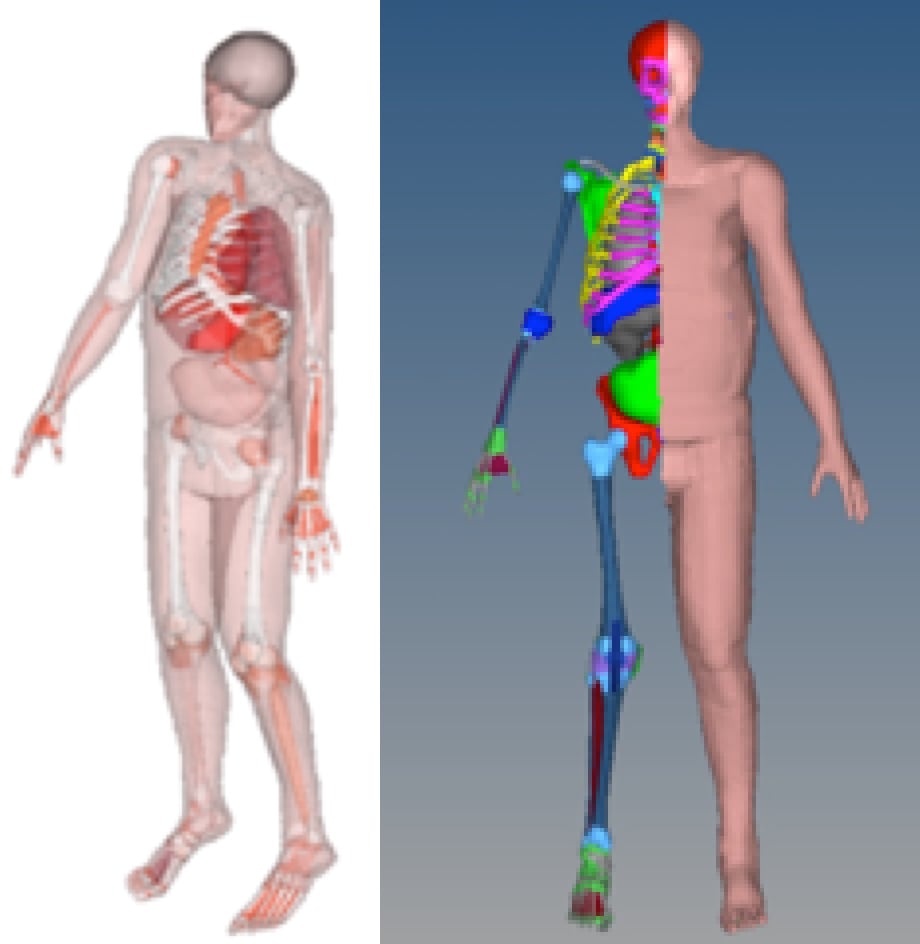
Description
HUByx (Hermaphrodite Universal Body YX) is a finite element model of the human body developed by CEDREM and UTBM. The genesis of HUByx stems from a desire to be able to study the damage caused by a blast wave inside the human body. Indeed, taking as an example a ballistic impact, the projectile can be stopped by any protection, and nevertheless cause significant damage inside the human body. It can be assumed that stopping the projectile causes a speed on the rear face of the protection which is transmitted to the human body and which generates a pressure wave which propagates inside it. The challenge of HUByx is to represent this pressure propagation inside the human body, by means of finite element simulations.


Solution explanation
The first step was to build the finite element model of the human body. To do this, the outline of the various organs and bones was traced based on CT slices. These sections were then stacked to obtain 3D geometry of the entire body. Mechanical properties were assigned to the various elements by carrying out a bibliographic study.
Since the various organs and bones of the human body are not necessarily in contact, and since the human body is essentially composed of water, it has been imagined to fill the remaining “void” with particles (SPH) whose mechanical behavior is close to that of water.
Then, the overall behavior of the human body and of certain subsets (notably the thorax) was validated by reproducing experiences from the literature (ref [1], [2], [3]) implementing non-penetrating impacts. Other validations were carried out on HUByx by submitting the human body model – an explosion and by comparing the pressures found in different organs – those found experimentally (work by Merkle and al). More recently, A. Bracq’s thesis, in partnership with the Center for Research, Expertise and Logistics Support (CREL) of the French Ministry of the Interior has shown how HUByx can be used in a process of predicting thoracic injury risk during non-ballistic impacts penetrating.
[1] Cynthia A. Bir, The Evaluation of Blunt Ballistic Impacts of the Thorax, Wayne State University
[2] David C. Viano, Biomechanical Responses and Injuries in Blunt Lateral Impact, Biomedical Science Dept, General Motors Research Labs
[3] John M. Cavanaugh et al., Lower Abdominal Tolerance and Response, Wayne State University, Bioengineering Center
[4] Charles K. Kroell et al., Impact Tolerance and Response of the Human Thorax II, Biomedical Science Dept, General Motors Research Labs and University Hospital San Diego
[5] Andrew C. Merkle et al., Evaluation of the Human Surrogate Torso Model Response to Ideal and Complex Blast Loading Conditions, PASS 2010
[6] Anthony Bracq, Contribution : la prédiction du risque lésionnel thoracique lors de chocs localisés à travers la caractérisation et la modélisation d’impacts balistiques non pénétrants, Université de Valenciennes et du Hainaut-Cambrésis